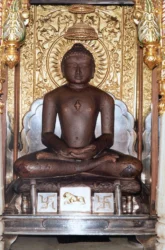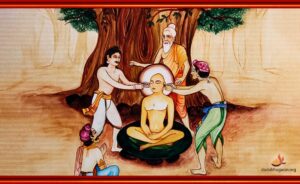Mahavir Jayanti: Honoring the Light of Peacefulness and Truth
India is famous for its rich spiritual traditions and diverse religious celebrations. Among them, Mahavir Jayanti holds a significant place, especially within the Jain community. Mahavir Jayanti: Honoring the Light of Peacefulness and Truth celebrates the birth of Lord Mahavir. He is the 24th and final Tirthankara of Jainism. This sacred festival showcases important values. These include ahimsa (non-violence), truth, celibacy, and detachment from materialistic things . It encourages a life of compassion, self-discipline, and spiritual awareness.
This festival matters to Jains and reminds everyone about living a moral and simple life. Let’s explore the story, significance, traditions, and modern-day relevance of Mahavir Jayanti.
Who Was Lord Mahavir?
Lord Mahavir, also known as Vardhaman Mahavir, was born in 599 BCE. His birthplace was Kundagrama, which is now Kundalpur in Bihar. He was the son of King Siddhartha and Queen Trishala. He was born into the royal Ikshvaku dynasty. This gave him all the comforts and privileges of life. Even with luxury all around him, he had a deep spirituality from a young age.
Jain beliefs say that Queen Trishala had 16 special dreams before Mahavir was born. Those dreams showed the coming of a divine soul. These dreams are still seen as sacred. Jain temples display them during Mahavir Jayanti.
At the age of 30, Mahavir renounced his royal life and set out in search of spiritual awakening. After 12 years of deep meditation and hard work, he reached Kevala Jnana. This means he gained supreme knowledge or omniscience. After his enlightenment, he spent his life sharing his teachings.
Insights of Lord Mahavir
Lord Mahavir’s philosophy focused on five key principles. These principles are the basis of Jain ethics today:
- Ahimsa (Non-Violence) – This means not harming any living being. It applies to actions, speech, and thoughts.
- Satya (Truth) – always speak the truth.
- Asteya (Non-Stealing) – Choosing not to take anything that others do not offer willingly.
- Brahmacharya (Celibacy or Chastity) – Leading a life of purity.
- Aparigraha (Non-Possessiveness) – Detachment from material possessions and desires.
These values are both religious and universal. They remain relevant across cultures and societies even today.
Significance and Festivity of Mahavir Jayanti
- Date and Timing: Mahavir Jayanti is celebrated every year on Chaitra Shukla Trayodashi as per the Hindu calendar. It marks the birth anniversary of Lord Mahavir and is observed with devotion and reverence by the Jain community.
- Rituals and Worship: On this day, special prayers and rituals are performed in Jain temples. The idol of Lord Mahavir is bathed and adorned, followed by the recitation of his teachings. Devotees participate in prabhat (morning processions) to spread his messages.
- Charity and Social Service: On Mahavir Jayanti, acts of charity and service are undertaken by the Jain community. Donations of food, clothing, and medicines are made to the needy. Awareness programs promoting non-violence and vegetarianism are organized.
- Peaceful Processions and Discourses: Devotees hold peaceful processions, spreading Lord Mahavir’s messages. Religious discourses emphasize the importance of compassion, truth, and non-violence in daily life.
Mahavir Jayanti for Non-Jains: A Universal Celebration
Mahavir Jayanti inspires many, even those who don’t practice Jainism. Its core values—non-violence, honesty, self-discipline, and humility—connect with everyone. They resonate deeply across all faiths and beliefs. In a world more divided than ever, Mahavir’s teachings bring us together. Schools, interfaith groups, and NGOs celebrate this day. They hold workshops, talks, and cultural events. These activities promote moral education and help build social harmony. Mahavir Jayanti teaches kindness to kids and urges adults to avoid distractions. It reminds us of the tools for inner peace and community wellness.
Mahavir Jayanti and Universal Peace
Lord Mahavir was a true champion of peace and a timeless symbol of non-violence. His deep philosophy could help solve big global problems. These include social conflict, economic inequality, environmental damage, and spiritual unrest. His core belief that “All souls are equal and eternal” promotes inclusivity. It fosters mutual respect and helps diverse communities live together in harmony.
It also guides international talks on peace, ethics, and human rights. Jain principles are now seen as examples of non-violence and moral integrity. Many world leaders and reformers see Lord Mahavir’s teachings as very important worldwide. Icons like Mahatma Gandhi, Martin Luther King Jr., and Nelson Mandela respected Mahavir’s principles. They especially valued ahimsa, or non-violence, and self-rule. These ideas shaped their peaceful fights for justice and equality.
Mahavir Jayanti: Honoring the Light of Peacefulness and Truth is more than a religious event. It reminds us of Lord Mahavir’s lasting influence on humanity. His legacy continues in Jain temples and sacred texts. It also thrives on global platforms. These platforms promote human rights, social justice, animal welfare, and ecological balance.
Mahavir Jayanti celebrates lasting wisdom that shapes our moral values today. It asks us to look inside ourselves. We should embrace compassion, honesty, generosity, and a clear spirit. In today’s world, aggression and materialism dominate. Mahavir’s life offers hope. It reminds us that peace starts within.
How is Mahavir Jayanti Celebrated?
Mahavir Jayanti celebrations differ a bit by region. However, here are some shared traditions:
1. Processions and Pujas
Many cities hold a grand “rath yatra” (chariot procession) featuring a statue of Lord Mahavir. The idol rests on a chariot adorned with intricate decorations and is pulled by devotees. The procession features chanting, traditional music, and dance. This mix creates a lively spiritual atmosphere.
Temples are decorated with flowers and lights, and special pujas (prayers) are performed. Jain devotees go to temples to pay their respects. They recite religious texts and meditate on Mahavir’s teachings.
2. Abhisheka Ceremony
A key ritual on Mahavir Jayanti is the abhisheka. This involves the ceremonial bathing of Lord Mahavir’s idol. Milk, honey, water, and sandalwood paste are part of the ritual. They symbolize purity and devotion.
3. Charity and Acts of Kindness
Many Jains take part in charity on this day, following Mahavir’s principle of compassion. This includes donating food, clothes, and medicine. It also means setting up blood donation camps, animal welfare events, and offering free health check-ups.
4. Lectures and Discourses
Spiritual leaders and monks share talks on Jain philosophy and Lord Mahavir’s teachings. These talks aim to encourage people to adopt ethical and mindful lifestyles.
5. Fasting and Prayers
Many devout Jains observe fasts and spend the day in prayer and reflection. People see fasting as a way to purify the body and mind and to detach from worldly pleasures.
Conclusion: Living the Legacy of Mahavir
Mahavir Jayanti is more than a religious event. It is a celebration of a lifestyle, a mindset, and a moral compass. In a fast-changing world, Lord Mahavir’s teachings provide a lasting guide. They help us create lives that are calm, meaningful, and strong in their simplicity.
This year, as you light a lamp or join a procession, take a moment to light the lamp within yourself. Think about how to add more compassion, truth, and detachment to your life. Do this not on Mahavir Jayanti, but every day.
Because the real tribute to Lord Mahavir is not in prayers and rituals—it’s in living with his teachings.




